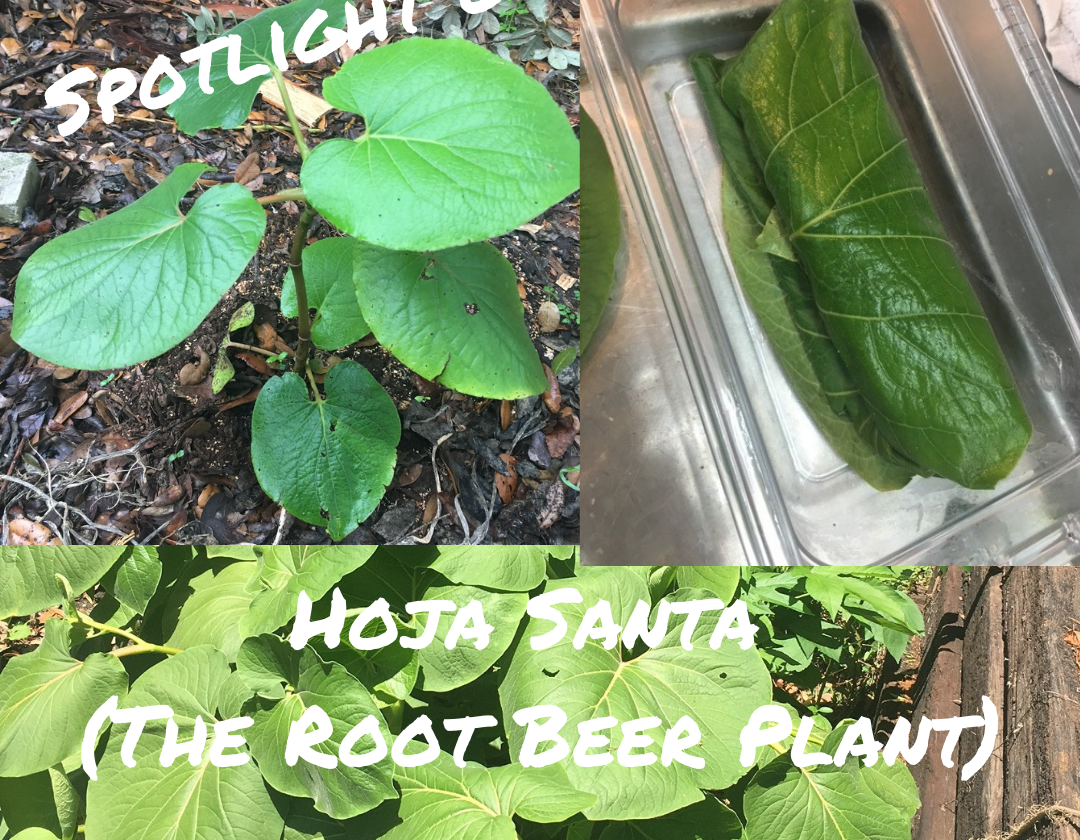
This Relative of Black Pepper has giant tropical leaves the size of dinner plates — and they smell like root beer! Its name means “Sacred Leaf,” and this native of the Central American jungle understory has it made in the shade!

Know it
Hoja Santa is a fast-growing, non-woody herbaceous plant. It produces baby plants at the base, eventually growing into a dense clump. In the right conditions, it will grow so fast that some folks say it’s invasive!
The big leaves are velvety and very fragrant. The scent is unique, but I would describe it as having notes of anise, licorice, mint and black pepper.
Meet it
This is another plant that’s hard to find in the States! Chefs in New York and other big northern cities pay growers top dollar to produce fresh leaves. I personally have never seen this plant for sale in stores, but it might make appearances in Latin Markets– theoretically. You might be able to find the dried leaves, sometimes.
Grow it
This plant grows as a tropical understory plant in its native range in Mexico. Hoja Santa has done well for me in places with dappled light as well as sunnier spots. The plants do resent the afternoon sun beating down on them, so somewhere with an eastern exposure should be just right for them.


If you live somewhere colder than I do, you’ll want to dig up the plants to keep in a green house until the weather warms up
This plant does not like the cold! (It is from tropical Central America, after all). If you live in a place that gets cold snaps, you’ll want to give them some attention before any frosts come. Here in south-central Texas the ground doesn’t freeze, so I just cover the base of the plants with a thick layer of mulch. The mulch insulates them and makes sure their feet are nice and toasty through the winter. The tops will die back in the winter, but they’ll pop back up next spring.
Eat it
This plant has tons of potential culinary applications!
Use them as edible wrappers for tamales, wrap them around chicken and fish and steam them, or use them as a low carb tortilla replacement in quesadillas!
Here’s some Rainbow Trout I wrapped in the leaves and steamed. I served the fish alongside some sunburst squash, crispy tostones, and a lime buerre blanc sauce. Delicious!



You can also use the leaves as you would other herbs, and use them to make sauces. They are a vital component of one of the Mole sauces –Mole Verde. This Mole sauce doesn’t use chocolate the way Mole Poblano does. Instead, it uses Hoja Santa leaves — turning it green!
A word of warning, however. This plant contains a compound named “safrole” which is the same chemical found in Sassafras — the original root beer flavoring. Safrole is also found naturally in cinnamon, nutmeg, black pepper, and basil. Studies showed that it caused liver cancer in rats and mice when given in high doses. This is subject to some debate, especially since it would be quite difficult for a human to consume a similar amount. As with any new food or substance, do your own research before putting it into your body!
Thanks for reading! Leave a comment below on some things you’ve cooked with Hoja Santa!


